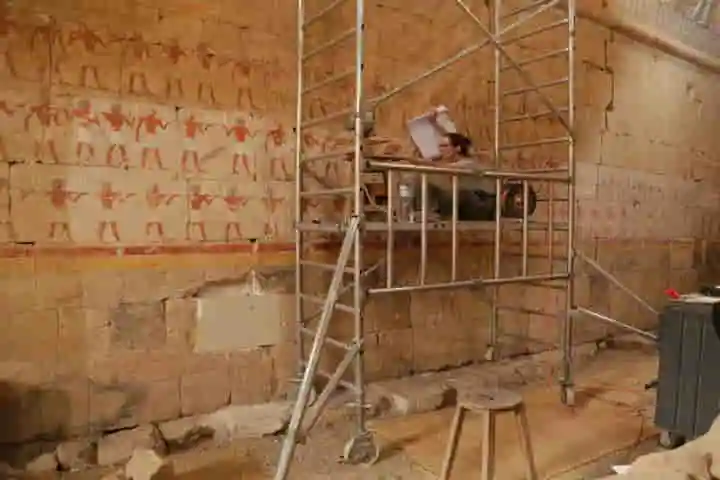Contrary to the widely held belief that it was only the master craftsmen in ancient Egypt who worked on the art in the temples, a recent study suggests that artisans of varied skills and training worked together to produce these unforgettable artworks.
An article in smithsonianmag.com mentions that details of this study carried out by University of Warsaw’s Polish Center of Mediterranean Archaeology researcher Anastasiia Stupko-Lubczynska has appeared in the journal Antiquity.
Along with her colleagues, Stupko-Lubczynska made two reliefs in the huge mortuary temple as the focus of their analysis. The temple is located at the Dayr al-Baḥrī complex in Thebes. Jesse Holth of ARTnews wrote that scenes that are 40 foot long appear on the walls of the temple's Chapel of Hatshepsut. These images are the same and include 200 figures which are almost identical and bear oblation for the pharaoh consisting of baskets of birds and sheaves of wheat.
The researchers on looking at these reliefs carefully discovered there were several inconsistencies in the style. Setting them right they found chisel marks which led to the view that the project involved the master artisans working closely with trainees, who were learning the craft.
Talking to the Science, Stupko-Lubczynska remarked: “Because we have so many figures with repetitive details, we can compare the details and workmanship. If you look at enough of them, it’s easy to see when someone was doing it properly.”
By and large the figures have the same pattern but distinctive differences are visible. One can observe messy chiselled edges in some of the torsos and legs while the quality of the wigs also varies.
Writing in the London Times, Rhys Blakely wrote: “The most accomplished sculptors created a single curl with three deft hammer strokes.” Learners on the other hand needed a number of strikes with the chisel.
Highlighting this aspect, Stupko-Lubczynska told the Art Newspaper: “One of these wigs, mostly done by a master and only partly by a student, demonstrates a virtuosity that is not met elsewhere, in a sense [saying], ‘Look how you have to do this!’ even though it was rather impossible for a beginner to achieve that level.”
Also read: Salt kitchens – a well guarded secret of the Mayan civilization revealed
The work done by the researchers involved hours of hard work making copies of the designs on plastic film sheets by meticulously tracing each of them, all the while sitting on the scaffolding.
Comparing this activity with the work that happened in the same place in ancient times, Stupko-Lubczynska in a statement remarked: ““I couldn’t stop thinking [that] our documentation team was replicating the actions of those who created these images 3,500 years ago. Like us, ancient sculptors sat on scaffolding, chatting and working together.”
While working to create the reliefs, the Egyptian artisans observed a seven-step process. As per ARTnews, walls were divided into square grids by them to precisely make the initial sketches with red and black paint followed by chiselling of the images into the limestone. This was examined by the master artisan before the next step of whitewashing and colouring could take place.
Since every stage caused erasing of the previous stage, very few traces of the individual steps of the process can be deciphered in the completed reliefs. However, Andrew Califf reporting for Haaretz stated that Stupko-Lubczynska found proof of nearly all the steps of this artistic endeavour, which included the square gird at the Temple of Hatshepsut.
Also read: Native Americans built structures that lasted 3,000 Years
This study eliminates the earlier held view that these architectural masterpieces were essentially created by trained artists only. In place of this it suggests it was a collaborative and on-the-job form of training.
Egyptologist from the University Liege, Dimitri Laboury told Science: “The artists who created all this really flew below the Egyptological radar. But those artists were key figures in a society which invested so much in artistic production.” Laboury was not part of the study.




















